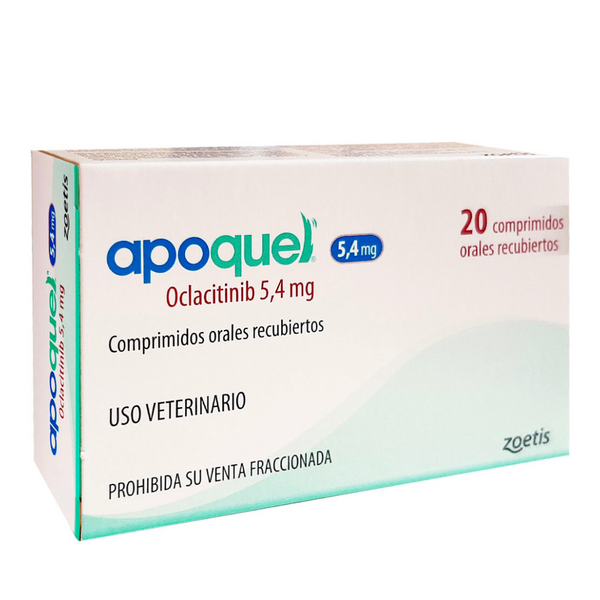|
Quantity
|
Out of stock
|
||
|
|
|||
🐕 APOQUEL 🐈 Zoetis, USA 🚑 non-hormonal drug for dermatitis of various etiologies accompanied by itching. Apoquel relieves itching caused by dermatitis, environmental allergies (pollen, dust mites), food allergies (soy, grain, dairy allergy), insect bites (fleas, mites or scabies), chemical allergies (shampoos, cleansers, deodorants, artificial floor coverings). DOSAGE: Apoquel is administered orally individually, by hand, mixed with feed, or force-fed at a single dose of 0.4-0.6 mg oclacitinib per kg of animal body weight twice daily for a maximum of 14 days. As a maintenance treatment for atopic dermatitis - once a day at the same dose, but not longer than 14 weeks. The schedule and duration of drug administration depend on the etiology and pathogenesis of dermatitis, the clinical condition of the animal and are determined by the veterinarian. ⚠️ CONTRAINDICATIONS: ⚠️ 🔹Apoquel should not be used in combination with immunosuppressive and anticonvulsant drugs. 🔹A contraindication to the use of Apoquel is individual intolerance to its ingredients. 🔹The drug should not be administered to animals with symptoms of immunosuppression, such as hyperadrenocorticism, or with progressive malignant tumors. 🔹 The medicine should not be administered to males during the mating season, animals under 12 months of age and/or weighing less than 3 kg, as well as pregnant, lactating and breeding females. ⚠️ Symptoms of overdose (and what to do for emergency care and antidote, if appropriate) Oclacitinib tablets were administered to healthy 1-year-old Beagle dogs twice daily for 6 weeks and then once daily for 20 weeks, for a total of 26 weeks, at a dose of 0.6 mg/kg body weight, 1.8 mg/kg body weight body weight and 3.0 mg/kg body weight. Clinical signs that were considered related to oclacitinib treatment included: alopecia (local), papillomas, dermatitis, erythema, abrasions and eschars, interdigital "cysts" and paw edema. During studies, inflammatory skin lesions were found to be mostly secondary to the development of interdigital boils on one or more extremities, and the number and frequency of these lesions increased with increasing dose. Enlargement of peripheral lymph nodes was noted in all groups, and the incidence of lesions increased with increasing dose, and these lesions were often associated with interdigital boils. The development of papillomas was found to be treatment-related but not dose-dependent. There is no specific antidote, if overdose symptoms occur, dogs should be treated symptomatically. 🟡 Storage conditions: The medicine is stored in the manufacturer's closed packaging, in a dry, light-protected place, out of the reach of children; separately from food and feed at temperatures from 0°С to 25°С. The shelf life of the medicinal product under storage conditions is 3 years from the date of production
































